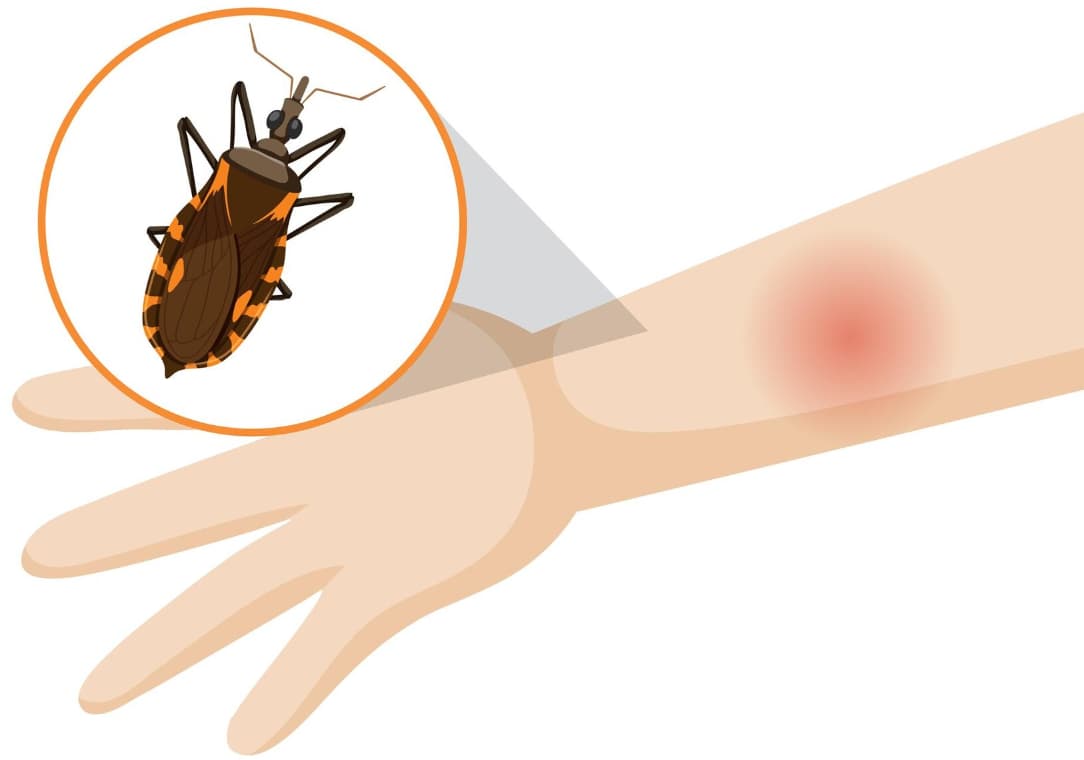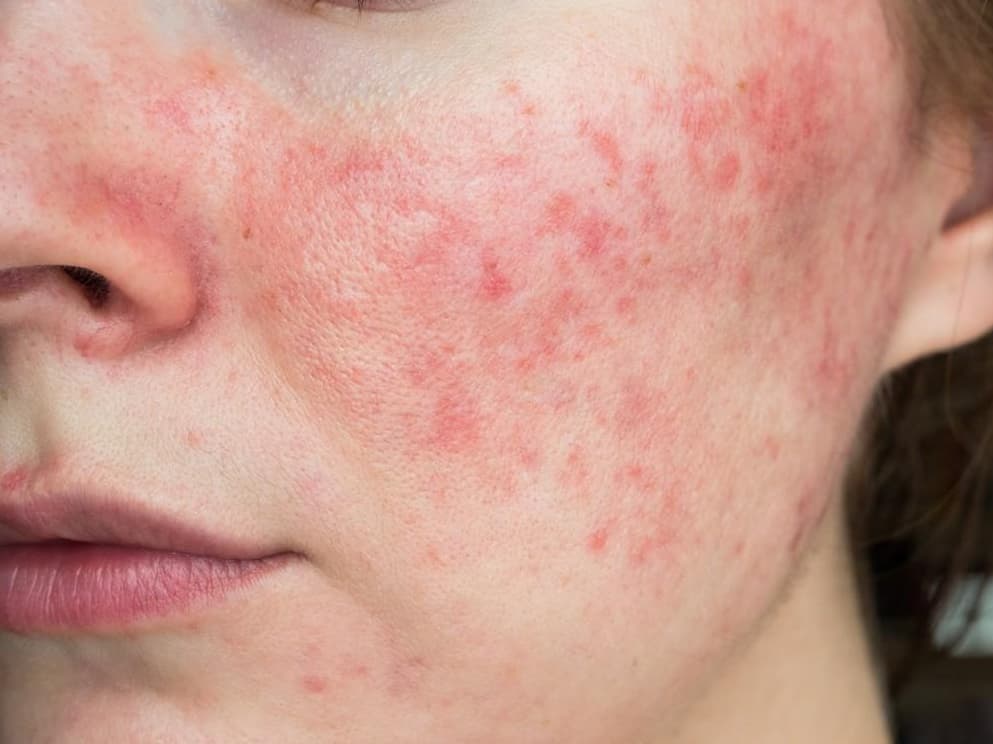When you’re enjoying a beautiful day outdoors or even just relaxing in your garden, the last thing you want to worry about is a bug bite.
But sometimes, what starts as a simple bite can develop into something that looks more concerning – like a bruise.
Many people panic when they see a bug bite turn into a purple or dark mark on their skin. Is this normal? When should you worry? These are questions that naturally come to mind, and they deserve clear, straightforward answers.
Bug Bite Bruise

In this comprehensive guide, we’ll explore everything you need to know about bug bites that look like bruises.
We’ll break down the different types of bugs that can cause these marks, explain why they happen, and most importantly, help you understand when a bruise-like bite is just a minor annoyance and when it needs medical attention.
Whether you’re an outdoor enthusiast, a concerned parent, or someone who just wants to be better informed, this guide will give you the knowledge you need to handle these situations with confidence.
Types of Bug Bites That Can Look Like Bruises
Not all bug bites will leave a bruise-like mark, but certain insects are more likely to cause this reaction. Let’s explore each type in detail, along with their specific characteristics and what you should watch for.
Spider Bites and Their Characteristics
When it comes to spider bites, most harmless spiders won’t leave more than a small red mark. However, certain species can cause more serious reactions that might look like bruises. Here’s what you need to know about different spider bites:
Non-Venomous Spider Bites:
- Usually causes minimal reaction
- Heal within a few days
- Rarely leave bruising
- May cause mild:
- Redness
- Slight swelling
- Minor itching
Venomous Spider Bites (Black Widow and Brown Recluse):
- Can cause serious reactions
- Often develop a bruise-like appearance
- May show these warning signs:
- Initial red mark turning purple or black
- Intense pain that increases over time
- Spreading discoloration
- Significant swelling
| Spider Type | Initial Appearance | Later Development | Warning Signs |
| Non-venomous | Small red mark | Fades quickly | Minimal pain |
| Black Widow | Red marks with points | Purple/black area | Severe pain |
| Brown Recluse | Bull’s-eye pattern | Dark center | Tissue damage |
Bee and Wasp Stings: Understanding the Bruising Process
Bee and wasp stings can be particularly painful, and in some cases, they may leave behind bruise-like marks. The reaction typically develops in stages, and understanding this progression can help you know what to expect.
The typical progression of a bee or wasp sting includes:
- Immediate Reaction
- Sharp, intense pain
- Burning sensation
- Red welt formation
- Possible small white spot at sting site
- Hours After Sting
- Swelling increases
- Redness spreads
- Possible bruising begins
- Pain may intensify
- Days Following
- Swelling begins to decrease
- Bruising may become more visible
- Itching often develops
- Gradual healing begins
Mosquito Bites and Skeeter Syndrome
Most people are familiar with typical mosquito bites – those small, itchy red bumps that show up after a mosquito feeds. However, some individuals experience a more severe reaction known as skeeter syndrome, which can cause bruise-like appearances.
Understanding normal versus severe mosquito bite reactions:
Normal Mosquito Bite Response:
- Small red bump appears
- Mild to moderate itching
- Slight swelling
- Fades within days
Skeeter Syndrome Signs:
- Large areas of swelling
- Dark purple or bruised appearance
- Significant heat around bite area
- Intense itching
- Possible fever or illness feelings
Important Note: People with skeeter syndrome aren’t necessarily allergic to mosquitoes in the traditional sense, but their body’s immune response is much stronger than average.
Tick Bites and Their Unique Characteristics
Tick bites present a unique challenge because they often go unnoticed initially. These tiny arachnids can attach to your skin and feed for days, potentially leaving behind bruise-like marks that may indicate serious conditions.
Key Features of Tick Bites:
- Initial Appearance
- Often painless
- Small red spot
- Possible embedded tick
- Minimal inflammation
- Development Over Time
- May develop bull’s-eye rash
- Possible purple or bruised appearance
- Spreading redness
- Varied coloration
- Warning Signs to Watch
- Bull’s-eye rash (especially with Lyme disease)
- Fever development
- Joint pain or stiffness
- Unusual fatigue
Causes of Bug Bite Bruises: The Science Behind the Colors
Understanding why bug bites can look like bruises involves knowing a bit about how your body responds to different types of insect encounters. Let’s break down the main reasons these bruise-like appearances develop.
The Basic Biology of Bug Bite Bruising
When an insect bites or stings you, several things happen in your body:
- Initial Impact
- Insect pierces skin
- Introduces saliva or venom
- Triggers immune response
- Causes local inflammation
- Blood Vessel Response
- Vessels may leak
- Blood collects under skin
- Creates bruised appearance
- Inflammation increases
- Healing Process
- Body sends healing cells
- Inflammation reduces
- Color changes occur
- Gradually fades
Different Mechanisms of Bruising
| Cause | How It Happens | Typical Appearance | Healing Time |
| Venom | Direct tissue damage | Dark purple, spreading | 1-3 weeks |
| Saliva | Immune reaction | Light purple, localized | 3-7 days |
| Physical Trauma | Blood vessel damage | Red to purple | 1-2 weeks |
| Allergic Response | Immune overreaction | Large, spreading bruise | Variable |
Treatment Options: From Home Remedies to Medical Care
Treating bug bite bruises requires a balanced approach, considering both the type of bite and the severity of your reaction. Here’s a comprehensive look at your treatment options, from simple home care to when you need professional medical attention.
Immediate First Aid Steps
When you first notice a bug bite turning into a bruise, take these initial steps:
- Clean the Area
- Wash with mild soap and water
- Pat dry gently
- Don’t scrub or irritate
- Keep area clean
- Apply Cold Therapy
- Use ice pack wrapped in cloth
- Apply for 15-20 minutes
- Repeat every 1-2 hours
- Helps reduce swelling
- Basic Medication Options
- Over-the-counter pain relievers
- Antihistamines for itching
- Anti-inflammatory drugs
- Topical treatments
Home Treatment Methods
For most bug bite bruises, these home treatments can provide relief:
Topical Treatments:
- Calamine lotion
- Hydrocortisone cream
- Aloe vera gel
- Cold compress
Oral Medications:
- Ibuprofen for pain and swelling
- Benadryl for allergic reactions
- Acetaminophen for discomfort
- Anti-inflammatory medicines
Natural Remedies:
- Tea bag compresses
- Baking soda paste
- Apple cider vinegar
- Honey (natural antibacterial)
Complications: When to Worry and Seek Help
While most bug bite bruises are harmless, some can develop into serious complications that require immediate medical attention. Understanding these potential complications can help you make informed decisions about when to seek professional help.
Allergic Reactions: Know the Signs
Allergic reactions can range from mild to life-threatening. Here’s what to watch for:
Mild Allergic Reactions:
- Increased swelling
- More intense itching
- Spreading redness
- Mild discomfort
Severe Allergic Reactions (Anaphylaxis):
- Difficulty breathing
- Throat tightening
- Rapid pulse
- Dizziness or fainting
- Severe swelling
Important: If you experience any signs of severe allergic reaction, seek emergency medical care immediately.
Infection Development
Infections can develop in any bug bite, especially if scratched or not kept clean. Watch for these signs:
- Early Infection Signs
- Increasing redness
- Warmth around bite
- Growing swelling
- More pain than expected
- Advanced Infection Signs
- Pus or drainage
- Fever development
- Streaking redness
- Severe pain
Serious Complications Table
| Complication | Warning Signs | Required Action | Time Frame for Action |
| Anaphylaxis | Breathing trouble, swelling | Emergency room | Immediate |
| Infection | Pus, fever, spreading redness | Doctor visit | Within 24 hours |
| Necrosis | Black/purple skin, severe pain | Emergency room | Immediate |
| Tick-borne illness | Fever, rash, joint pain | Doctor visit | Within 48 hours |
Frequently Asked Questions
- Q: How can I tell if a bug bite bruise is serious?
A: Watch for spreading redness, severe pain, fever, or difficulty breathing. These symptoms require immediate medical attention.
- Q: What’s the best immediate treatment for a bug bite that’s starting to bruise?
A: Clean the area, apply ice, and use over-the-counter antihistamines or pain relievers as needed.
- Q: How long should bug bite bruises last?
A: Most should fade within 1-2 weeks. If it lasts longer or gets worse, consult a healthcare provider.
- Q: Can I prevent bug bites from bruising?
A: While you can’t always prevent bruising, quick treatment with ice and anti-inflammatory medications may help reduce it.
- Q: Should children with bug bite bruises be treated differently?
A: Children may need closer monitoring and gentler treatments. Consult a pediatrician if you’re concerned.
- Q: What makes some people more likely to get bruising from bug bites?
A: Factors include:
- Individual immune response
- Blood-thinning medications
- Certain medical conditions
- Age and skin sensitivity
Also Check:
Conclusion:
Bug bites that look like bruises can range from minor annoyances to serious medical concerns.
The key to handling them properly lies in understanding what’s normal and what’s not.
Remember these essential points:
Key Takeaways:
- Most bug bite bruises heal on their own
- Quick treatment reduces complications
- Know the warning signs of serious reactions
- Don’t hesitate to seek medical help if concerned
- Prevention is always better than treatment
Remember, while this guide provides comprehensive information, it’s always better to err on the side of caution.
If you’re ever unsure about a bug bite bruise, especially if it’s accompanied by concerning symptoms, don’t hesitate to seek professional medical advice.



